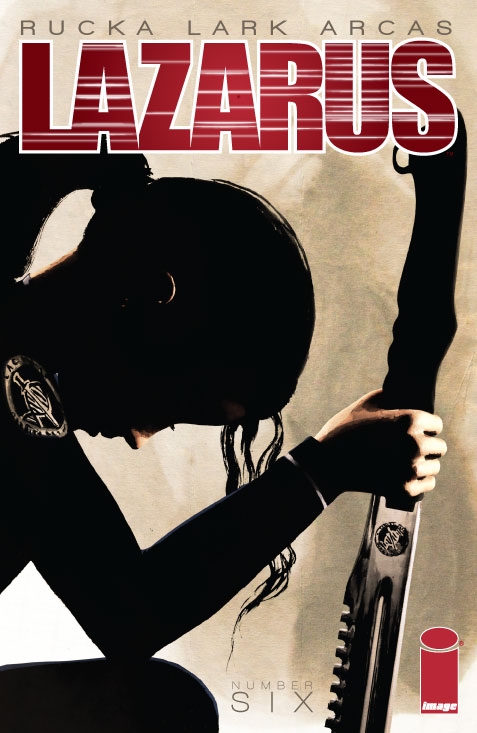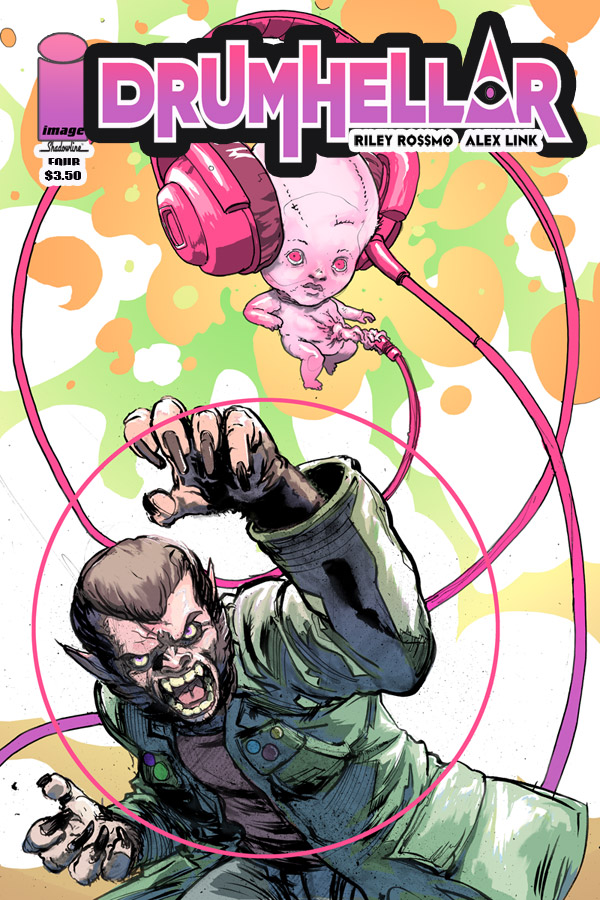If G.D. Kennedy were a comic-book character, he’d be called Mr. Image. Here he is with this week’s favorite book from the hip publisher of hip, the hip Lazarus #6:
By G.D. KENNEDY
Science fiction as a genre is rooted in social commentary, using a created world of exaggerated and hyperbolic possibility to reflect on our reality. By Issue #6, it is clear that Lazarus revels in this tradition as it presents a manifestly unjust and economically divided world that stands as a staunch critique of the dangers of the consolidation of wealth and resources in the hands of a very few.
Lazarus is set in dystopic future where, following a financial collapse, nation-state structures have been replaced by a rigid hierarchical caste system, with oligarchic “Families” having divided the globe into their personal dominions. A select few serve them as “Serfs,” while the great bulk of the population are “Waste,” an impoverished and economically subservient class that is treated as disposable by the upper echelons.
Where the first arc introduced the world through the eyes of the Family Carlyle, the second explores the divide between the classes. The new storyline follows a Waste family who, in #6, is faced with the repercussions of the loss of their farm and their unforgiving economic servitude to the Family Carlyle. At the same time, Issue 6 hints at growing dissent among the Waste as the possibility of domestic terrorism – or revolution – is introduced; this narrative is seen through the eyes of Forever, a member of the Family Carlyle who is beginning to question the morality of this rigid social hierarchy, and her place within it.
Lazarus is a book that is plainly comfortable to exist in its own space, moving at a slow burn as writer Greg Rucka patiently unveils his world in a manner that suggests a story more being revealed than built by the author. This is buttressed by Michael Lark’s art, which employs a stark photorealist style that leaves each panel a frozen moment in time – there are no motion lines to be found – creating a solemn and almost peaceful feel to a book that is routinely visceral and unnerving.
Other Image books that I am reading this week:
Secret #5: Secret, Jonathan Hickman’s spy thriller, has been most noted for its punctuated production schedule, with more than a year between issues 1 and 3. But starting with Issue #5, it is plotted as a monthly series. This can only be a good as the story to date feels unpolished and at times disjointed. Secret has laid a foundation for an engaging caper, with Issue #5 revealing more of the underlying mystery, and will benefit from the added attention it will receive with a regular production schedule.
Drumhellar #4: Drumhellar is a wild and bizarre experience. Issue #3 ended with stampeding ghost triceratops being herded away by an equally ghosty velociraptor in riding chaps. Issue #4 continues this descent into absurdity. Drumhellar exults in its over-the-top nature, resulting in a fun, if sometimes confusing, story, but its true strength is its art by Riley Rossmo, which is wild and bright with splash pages that often seem better suited for a gallery than a comic.
Leave a comment, hip reader!


